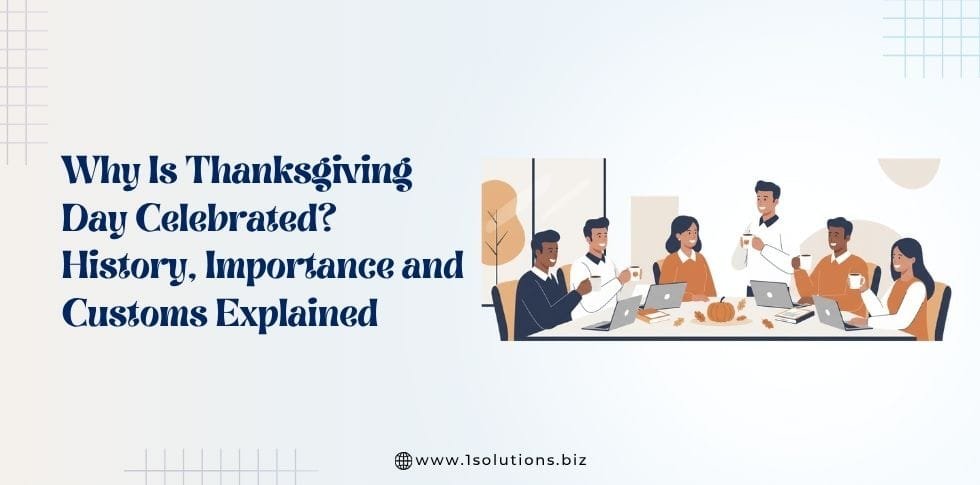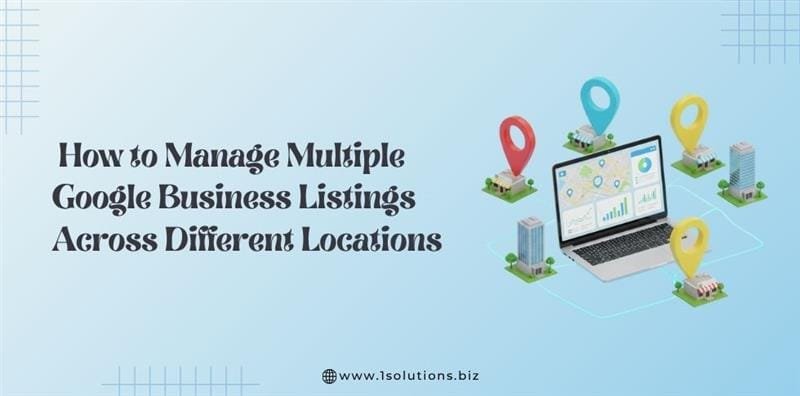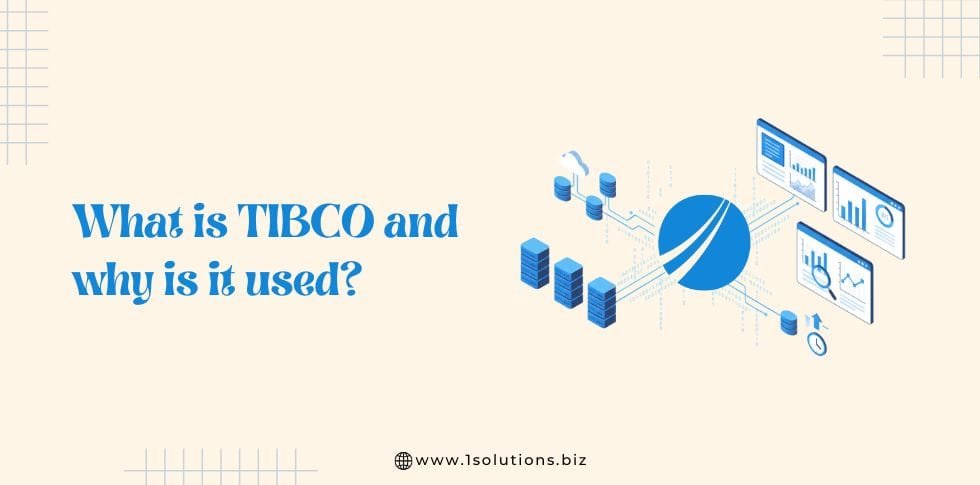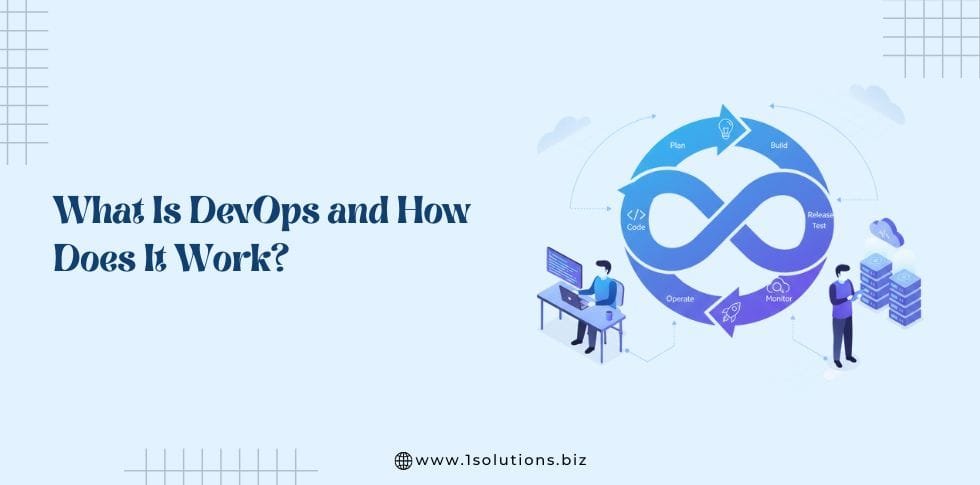On a crisp November morning, neighborhoods across the United States exhale for a few hours. Kitchens fill with the aroma of roasting poultry and cinnamon. Cars stream toward family homes and church parking lots.
Screens light up with faces of relatives tuning in from afar.
Thanksgiving is, at once, intimate and public. It is a meal and a public ritual. It is comfort and conversation. The day invites gratitude while also prompting questions about memory and responsibility.
This article examines Thanksgiving as it is lived in 2025. We will explore what the holiday means now for families and communities, and how that meaning has changed over time. Let’s trace the history of Thanksgiving from early harvest rituals to national proclamations and modern civic theater. We will describe the customs that shape the day from the table to the parade route. Finally, we will reflect on how global perspectives, technology, and concerns about sustainability are shaping the holiday and suggest likely trends for the decade ahead.
Meaning and Modern Significance
Gratitude as Practice and Pause
Thanksgiving is fundamentally about gratitude. Families and friends name the people and circumstances for which they are grateful. In practice, the ritual does several social jobs at once. It signals belonging a provides a socially sanctioned pause from work. It creates a space for people to narrate their recent struggles and small successes to one another.
In 2025, gratitude often includes an acknowledgement of resilience. The public memory of a global pandemic and of other social disruptions has made many households attentive to the fragile pleasures of routine. Saying thanks is layered with recognition of survival and recovery. For many people, gratitude is both private and civic. Dinners often include toasts that extend thanks to caregivers, community volunteers, and essential workers.
Family, Chosen Family, and Friendsgiving
Modern family forms are diverse. Many adults live far from biological relatives. For them, chosen family matters. Friendsgiving has become an enduring practice. Academic studies and cultural reporting in the early 2020s documented how groups of friends organized a separate meal that ranged from casual potluck evenings to elaborate gatherings with themed menus. In 2025, Friendsgiving is fully normalized as a parallel ritual that celebrates chosen kinship.
Hybrid gatherings are also common. Video platforms and affordable streaming devices enable relatives to join by screen. Households create hybrid rituals that integrate in person talk with remote presence. Hosts set up camera angles so distant members can see the table. Some families coordinate a single toast across locations. These practices reflect how technology reshapes presence without eliminating the desire to share food and time.
Spiritual and Civic Dimensions
Thanksgiving retains a spiritual dimension for many. For religious households, the day can include prayers of thanks within formal worship. Public institutions also mark the day with civic proclamations or community ceremonies. The original meaning of early American thanksgivings, rooted in prayers for a good harvest and survival, continues to echo. But the civic meaning of the holiday has expanded to include a recognition of social responsibility. Volunteerism around the holiday has grown, and many communities treat the day as a time to support food banks and charitable programs.
Inclusion, Indigenous Acknowledgment, and Reflection
A persistent change in the holiday’s meaning is the increasing attention to Indigenous history. Since the late 20th century, Indigenous scholars and activists urged a fuller account of the past. In 2025, many households and institutions include land acknowledgments and educational programming. Some families invite Native speakers to share food traditions or stories. These practices do not erase the difficult history of colonization, but they do open a space for reflection and for including voices once silenced.
Sustainability and Ethical Consumption
Environmental concerns shape Thanksgiving choices for many households. Hosts often plan carefully to reduce food waste. Plant based main dishes, locally sourced produce, and smaller turkey sizes are more common. Leftover donation programs and food rescue apps have proliferated. The holiday has become a small but visible site where concerns about supply chains and ecological impact intersect with customary celebration.
Historical Background
Understanding Thanksgiving requires a layered account that moves beyond the simple origin story. The holiday as a civic ritual was built over centuries, drawing on Indigenous harvest practices, European thanksgiving customs, and national politics.
Harvest Rituals and Indigenous Traditions
Long before European arrival, Indigenous communities across Turtle Island observed seasonal cycles with rites of gratitude, feasting, and ritual. These observances varied by region and nation. They included offerings, dances, and communal sharing that honored relations among people and between people and the land. Indigenous harvest rituals were rarely singular events. They were embedded within broader cycles of reciprocity and stewardship.
The 1621 Gathering at Plymouth
The 1621 feast at Plymouth is a well known historical episode often presented as the origin of the American Thanksgiving. English settlers at Plymouth and members of the Wampanoag Confederacy shared a multi day harvest event that included food, games, and diplomatic exchange. Contemporary accounts, including those of Edward Winslow, describe a convivial event that followed a difficult year for the settlers.
Scholars caution against seeing the 1621 gathering as a simple story of friendship. The event occurred within a complex landscape of diplomacy, alliance, and later conflict. Indigenous assistance was crucial to the survival of colonists, but later expansion of English settlements produced dispossession, disease, and violence that reshaped Native lifeways.
Early Proclamations and Local Observances
Colonial communities and later state governments observed days of thanksgiving sporadically, often in response to harvest success, military victories, or crises. In 1789, President George Washington issued a national proclamation calling for a day of public thanksgiving and prayer, a civic act intended to unify a new nation. The practice was not yet standardized. Different states and communities observed their own days.
Sarah Josepha Hale and National Standardization
The nineteenth century saw an active campaign to make Thanksgiving a national holiday. Sarah Josepha Hale, an editor and cultural influencer, lobbied presidents for decades to formalize a national day of thanksgiving. Her effort culminated when President Abraham Lincoln, in 1863 during the Civil War, proclaimed a national Thanksgiving Day to be observed on the last Thursday in November. Lincoln framed the proclamation as a means to foster national unity and gratitude amid conflict.
The Roosevelt Change and Congressional Resolution
Thanksgiving remained set at the last Thursday in November until 1939. That year President Franklin Roosevelt moved the date earlier in November to extend the Christmas shopping season as a response to the economic struggles of the 1930s. The change sparked controversy and state level confusion, a dispute often described as “Franksgiving.” In 1941, Congress legislated the holiday as the fourth Thursday in November, creating a stable federal calendar that persists today.
Twentieth Century Rituals and Popular Culture
The twentieth century shaped many of the public rituals associated with Thanksgiving. The Macy’s Thanksgiving Day Parade in New York City, which began in the 1920s, introduced floats and giant balloons that became national icons via broadcast media. Football became a Thanksgiving tradition with NFL and college games widely televised. The presidential turkey presentation evolved into a light ceremonial spectacle that blends politics, media, and civic theater.
Memory, Mourning, and Contestation
By the late twentieth century, Native organizers and scholars had critiqued the holiday’s celebratory narrative. Events such as the National Day of Mourning in Plymouth, which began in 1970, offered counternarratives that emphasize the impacts of colonization. The public recognition of these perspectives has increased in recent years. Some institutions and educational programs incorporate dual programming that combines celebration with critical reflection.
Traditions and Customs
Thanksgiving traditions are rich and varied. They range from culinary forms to public spectacles to acts of service. Many traditions have local shapes and contemporary inflections.
The Thanksgiving Meal
The centerpiece of the holiday is the shared meal. The canonical menu includes roasted turkey, stuffing or dressing, mashed potatoes and gravy, cranberry sauce, vegetables, and pie, especially pumpkin pie. Yet regional variation is significant.
United States regions have distinctive food cultures. In New England, seafood sometimes appears alongside turkey. In the South, cornbread dressing, sweet potato casseroles, and collard greens carry long histories tied to African American culinary traditions. The Midwest often resembles a potluck culture with family casseroles and multiple generations contributing recipes. On the West Coast, menus frequently incorporate multicultural fusion and farm fresh ingredients.
Contemporary meals reflect dietary diversity. Hosts often prepare multiple main dishes to accommodate dietary restrictions and ethical choices, including plant based roasts and gluten free desserts. Recipes now circulate widely on social platforms and many families test new dishes before the holiday season. Hosts use apps to plan portion sizes and coordinate contributions to reduce waste.
Friendsgiving and Chosen Gatherings
Friendsgiving remains one of the most prominent innovations of recent decades. It allows groups of friends to share a communal meal that emphasizes creativity and inclusion. Friendsgiving often precedes or follows the family table and offers a more relaxed setting, which is appealing to younger adults and those who live far from family.
Parade, Pageant, and Public Spectacle
The Macy’s Thanksgiving Day Parade is a national broadcast event that showcases floats, balloons, performers, and marching bands. Local parades and civic events also play important roles. Parades have a civic valence, creating public space for collective celebration and local pride. They also animate debates about commercialization and public culture.
Football and Shared Viewing
Football and Thanksgiving are entwined. For many families, watching the games together is as habitual as eating. The ritual of viewing fosters intergenerational bonding and shared commentary. Sports create a common language for spectators and often structure the day’s rhythm.
Turkey Presentation and the Pardon
The tradition of presenting a live turkey to the head of state dates back over a century. The modern ceremonial pardon is largely symbolic. It combines humor and media ritual, and it often raises questions about animal welfare and ethical consumption. The ceremony is part of the cultural script of the holiday where civic figures perform lighthearted acts that attract national attention.
Volunteerism and Food Justice
Thanksgiving spurs a great deal of volunteer activity. Soup kitchens and food banks see increased demand, and many non profit organizations organize donation drives and meal deliveries. The holiday has become a focal moment for advocacy around food security and hunger relief. Initiatives that focus on reducing food waste and redistributing surplus are now central to many community plans.
Modern Twists and Technology
Modern technology has changed how people cook, shop, and gather. Smart kitchen devices, online grocery deliveries, and recipe apps reduce stress for hosts. Social platforms amplify culinary creativity and share memory making. Streaming and video calls make hybrid reunions possible. In 2025, many households combine in person meals with digital elements, such as remote toasts, shared photo streams, and simultaneous playlists.
Rituals of Remembrance
Increasingly, families add moments of remembrance and reflection to their gatherings. Land acknowledgments and brief educational readings about Indigenous history are more common in public institutions and some private settings. Museums and universities host programming that pairs celebratory events with historical education.
Cultural and Global Perspective
Although Thanksgiving is most deeply rooted in United States civic culture, it sits within a global family of harvest rituals. Various societies celebrate seasonal bounty with festivals and feasts that combine gratitude, redistribution, and ritual.
Canadian Thanksgiving
Canada celebrates Thanksgiving on the second Monday in October. Its roots are diverse, including harvest thanksgiving and the commemoration of early explorer voyages. The holiday shares culinary features with the American holiday but stems from different seasonal timing and historical associations.
Harvest Festivals and Global Parallels
Many cultures mark harvest times with thanksgiving rituals. Examples include:
Chuseok in Korea, a major family centered harvest festival involving ancestral rites and seasonal foods.
Mid Autumn festivals across East and Southeast Asia, which focus on lunar cycles, family gatherings, and moon cakes.
Pongal and Makar Sankranti in South Asia, which celebrate seasonal solar transitions with offerings and communal meals.
Sukkot in Jewish tradition, a biblically rooted harvest festival marked by meals in temporary structures and gratitude prayers.
These festivals share a logic of cyclical gratitude and social redistribution that echoes Thanksgiving while remaining distinct in form and theology.
American Style Thanksgiving Abroad
In global cities and in expatriate communities, American style Thanksgiving dinners occur in restaurants and community centers. For many migrants and travelers, the holiday is a way to transmit cultural practices and to create a sense of home abroad. International retail calendars sometimes adopt American holiday cues for marketing, but the civic gravity of Thanksgiving remains primarily rooted in the United States.
Thanksgiving in 2025
Digital Age Rituals and Hybrid Presence
Technology has redefined presence. Cameras and streaming services allow distant relatives to be included in real time. Hosts set shared playlists, run live toasts, and coordinate recipes through web based documents. Virtual presence does not replace physical gathering, but it broadens who can participate in the ritual. In 2025, many families negotiate hybrid etiquette for including remote attendees in meaningful ways.
Sustainability Practices and Food Ethics
Sustainable choices are mainstream. Hosts source locally when possible. Pre Thanksgiving food drives and partnerships with food rescue organizations have become routine. Many households adopt strategies to avoid waste such as coordinated menus that minimize duplicate dishes and planned donations of leftovers. The public conversation about animal welfare and the environmental cost of industrial poultry production has made plant based and small scale alternatives more visible.
Indigenous Inclusion and Historical Reckoning
Civic institutions and many private households increasingly include Indigenous perspectives. Land acknowledgments, educational programming, and collaborations with Native led organizations are more common. Some museums and schools offer dual programming that pairs celebratory community meals with panels on history and contemporary Indigenous issues.
Consumer Culture and Emphasis on Local Economies
While retail and the commerce tied to Black Friday and Cyber Monday continue to shape the holiday economy, there is also a growing counter current. Community markets, local shop promotions, and movements that encourage mindful consumption have gained traction. Some communities emphasize supporting local retailers and artisans as a way to align holiday spending with community building.
Health, Safety, and Post Pandemic Practices
The pandemic changed the way people think about gatherings. In 2025, many hosts are still mindful of ventilation, guest health, and flexible guest lists. Policies for sick guests and last minute virtual attendance are normalized. Public health awareness has become part of the etiquette of hosting.
Regional Differences and Local Varieties
Thanksgiving remains richly local. Regional histories and immigrant cuisines shape menus and ritual forms.
New England often foregrounds historical continuity, sometimes accompanied by museum programs that reflect on early colonial experience. Seafood and clam preparations appear in coastal zones.
The South integrates African American culinary traditions with cornbread dressing, sweet potato pies, and rich gravies. Family and church functions often shape the day.
The Midwest emphasizes reunion and potluck dynamics where extended families trade heirloom dishes.
The West Coast foregrounds fusion cuisine and farm fresh produce with influences from multiple immigrant traditions.
Urban and rural differences also matter. Urban households may limit guest lists and use restaurants and delivery. Rural families often host larger gatherings with multi generational attendees.
Cultural Tensions and Public Conversations
Thanksgiving is not free of controversy. Key contested areas include historical memory, hunger and food justice, and commercialization.
Historical Reckoning asks how to honor Indigenous voices while maintaining family rituals. Museums, schools, and some households now pair celebratory events with educational content.
Food Justice highlights the contrast between abundance and food insecurity. Food banks and hunger relief organizations leverage the holiday as a mobilization moment.
Commercialization continues to provoke debate. Some see early holiday retail as practical for businesses. Others view it as diluting the holiday’s communal meaning. Local movements that support small businesses and mindful consumption have grown as an alternative.
Looking Ahead: Trends and Predictions
Several trends look likely to shape Thanksgiving in the next decade.
Deeper Inclusion of Indigenous Perspectives. Expect more institutions and families to incorporate Native led programming and educational content.
Greater Sustainability. Food sourcing and waste reduction practices will increase, as will adoption of plant based and small scale alternatives.
Tech Enhanced Rituals. Hybrid gatherings, smart kitchen tools, and shared digital memory making will continue to expand. Augmented presence tools may further blur distance and presence.
Civic Action Paired with Celebration. Communities are likely to pair feasting with volunteer action and public dialogues about social repair.
Frequently Asked Questions About Thanksgiving in 2025
1. How has the meaning of Thanksgiving changed over time?
Thanksgiving has grown from a simple harvest festival into a national day of gratitude, reflection, and community. Today, it’s not only about food and family but also about acknowledging resilience, inclusion, and shared responsibility. Many people now use the day to express thanks for both personal blessings and collective well-being.
2. What is Friendsgiving, and why is it popular?
Friendsgiving is a modern twist on Thanksgiving where friends gather to share a meal, often before or after the traditional family celebration. It’s popular because it gives people who live far from relatives or who value chosen family a way to celebrate together. The atmosphere is relaxed, inclusive, and focused on connection rather than formality.
3. How are Indigenous voices being recognized during Thanksgiving today?
In 2025, many families, schools, and communities include Indigenous land acknowledgments or educational moments during Thanksgiving. These practices honor Native history and remind participants of the holiday’s complex origins. Some events also feature Indigenous speakers or traditional foods to promote awareness and respect.
4. How are sustainability and ethical eating shaping Thanksgiving?
Sustainability is now a key part of how people plan their Thanksgiving meals. Many hosts choose local or organic ingredients, reduce food waste, and explore plant-based or smaller meat options. Food donation programs and composting have also become more common, helping make the holiday more eco-conscious and community-focused.
5. How has technology changed the way people celebrate Thanksgiving?
Technology has made Thanksgiving more connected and flexible. Families use video calls to include distant relatives, share digital photo albums, and even coordinate playlists. Smart kitchen tools help streamline cooking, while social media allows people to share recipes and moments in real time. Hybrid celebrations are now a normal part of the holiday.
Conclusion
Thanksgiving in 2025 blends care and critique, ritual and reflection. It is a day where gratitude is practiced, where families and chosen families gather, where public rituals and personal memory intersect. The holiday carries warmth and complicated history. Its rituals reassure and its controversies instruct.
As Americans gather at tables and on screens this year, Thanksgiving will continue to be a place where the private and the public meet. It is a holiday that can comfort while still asking citizens to reckon with history and responsibility. If the recent past taught anything, it is that traditions can hold both celebration and correction. Thanksgiving’s lasting value may be its capacity to hold both gratitude and humility at once.





























